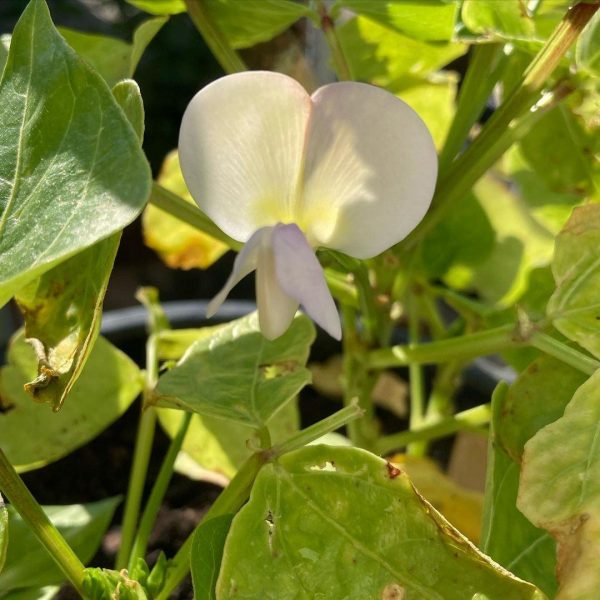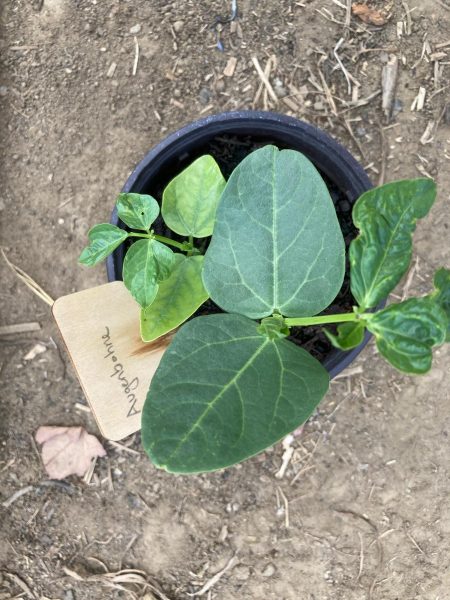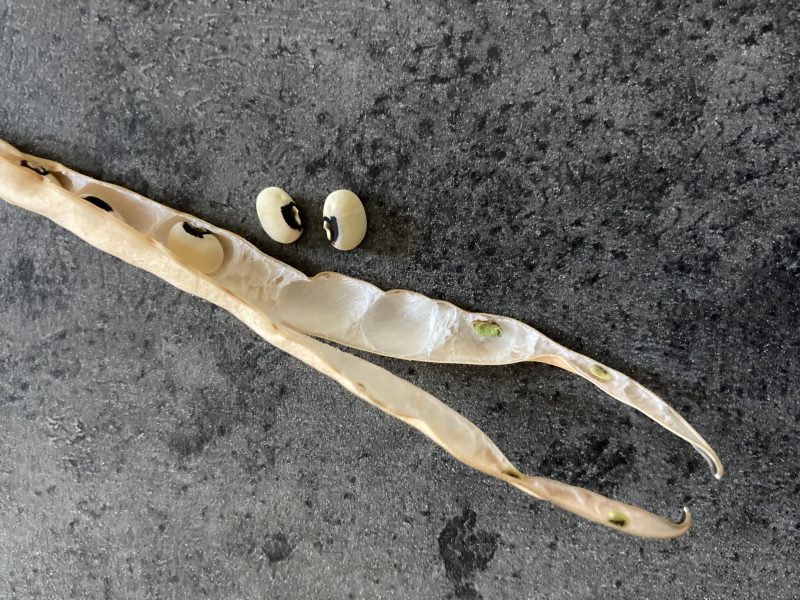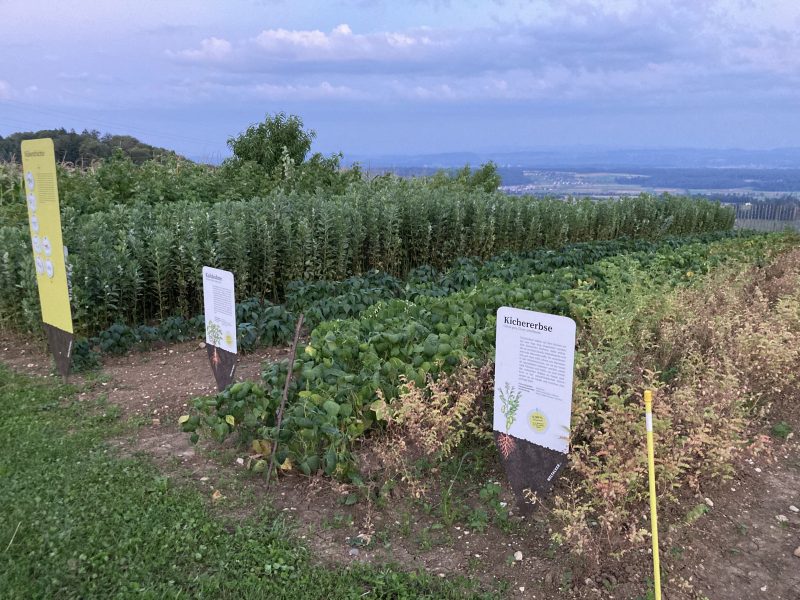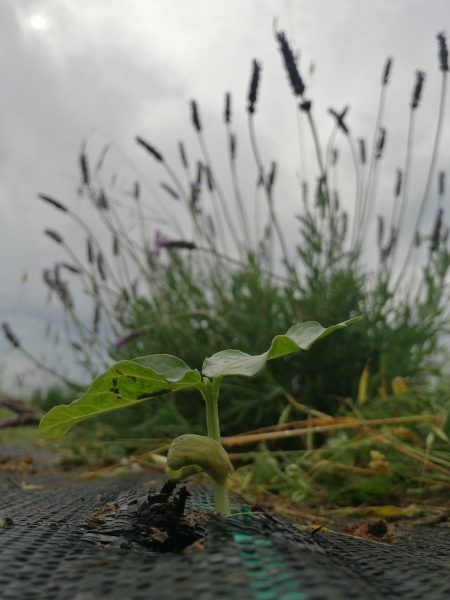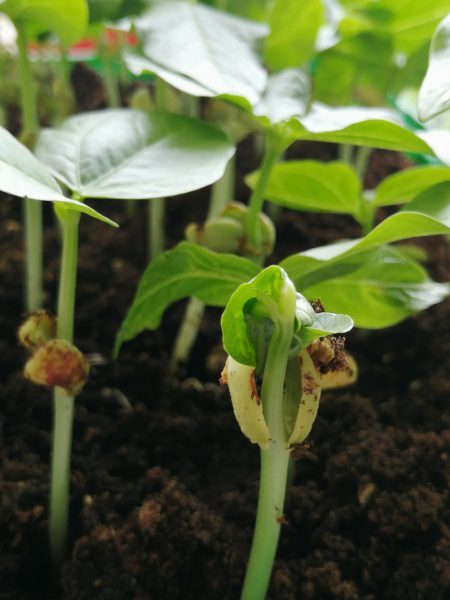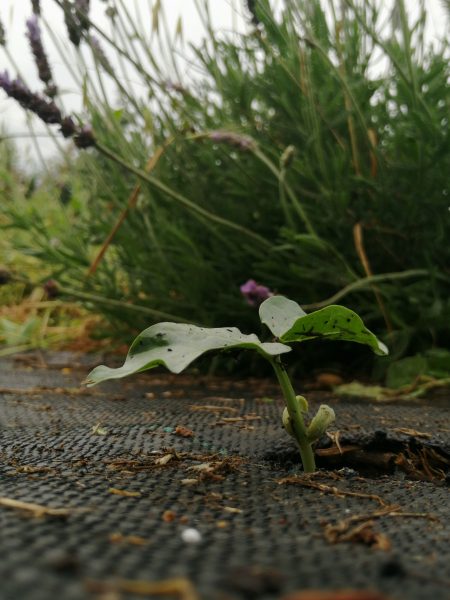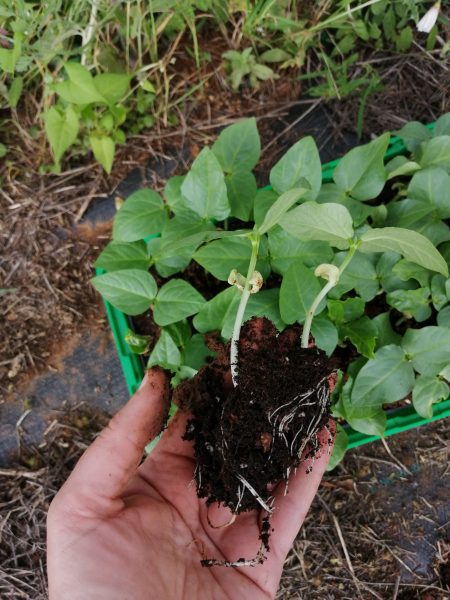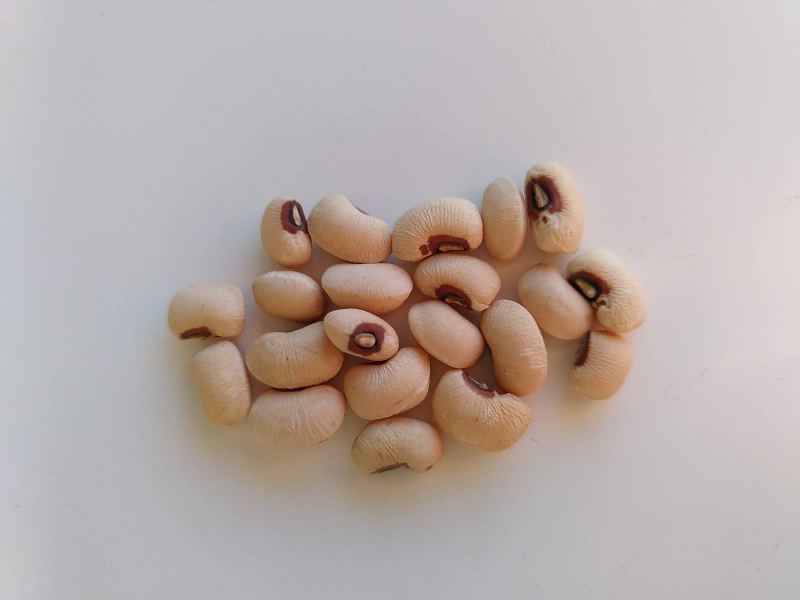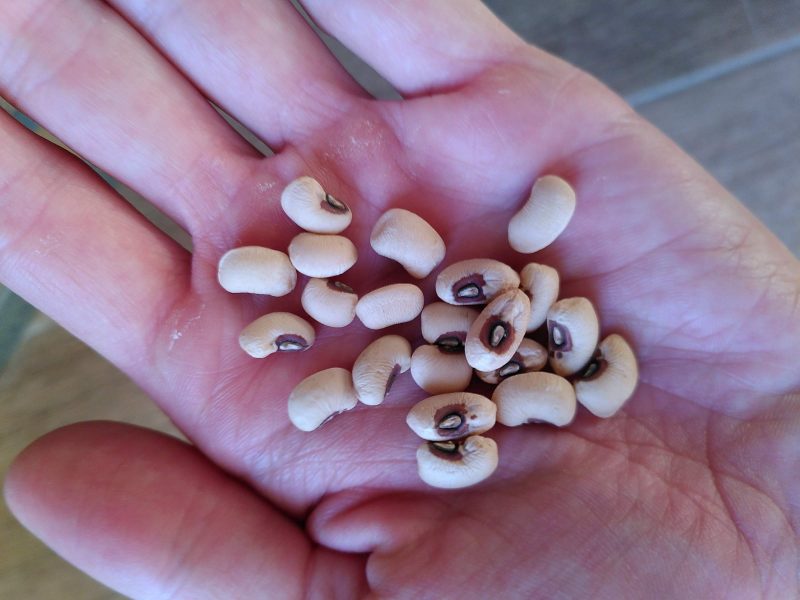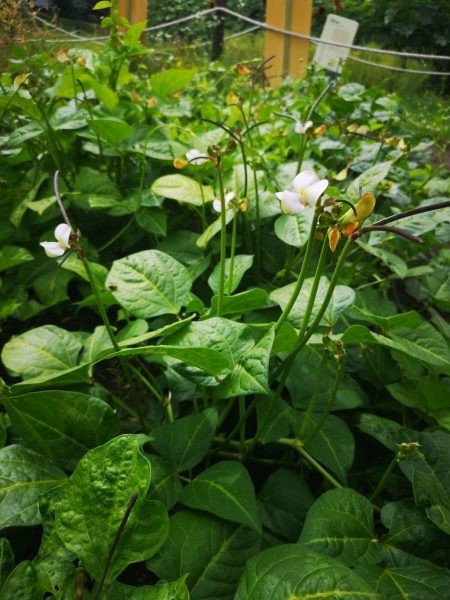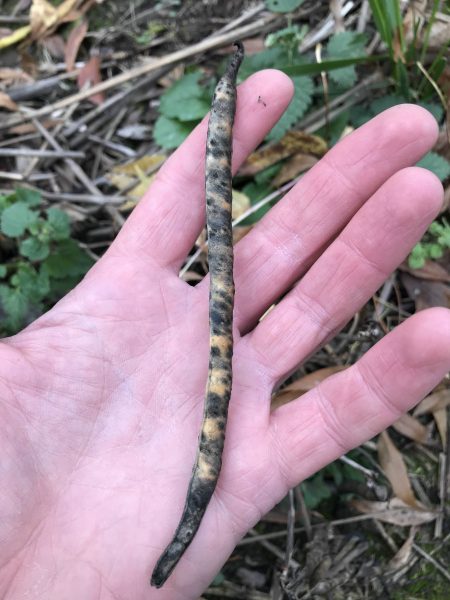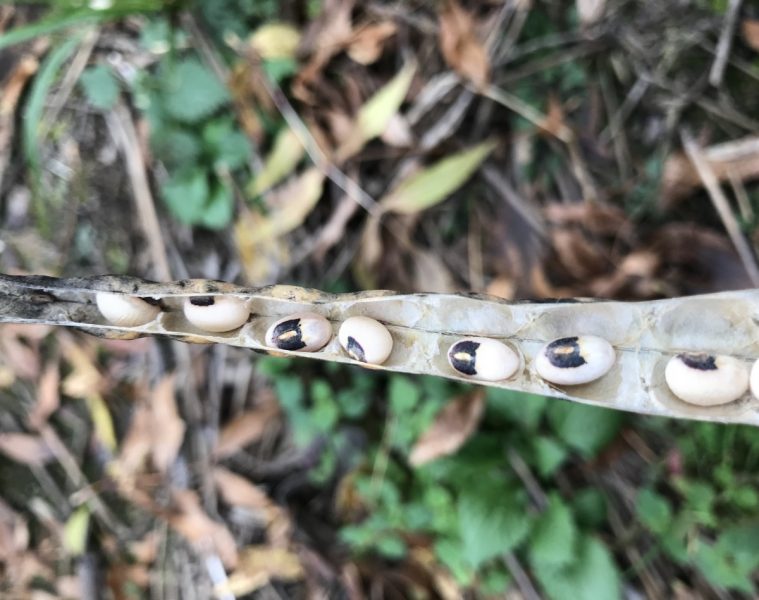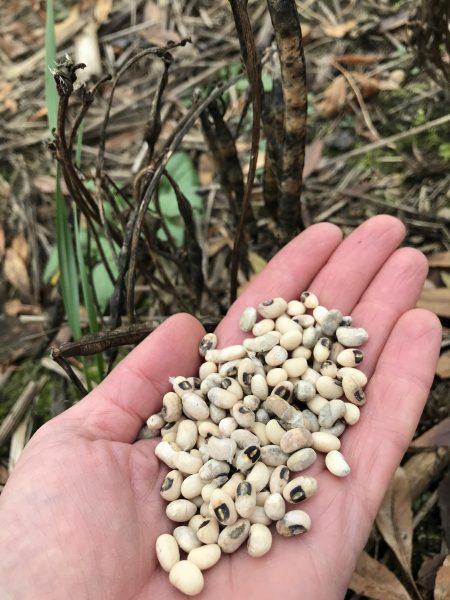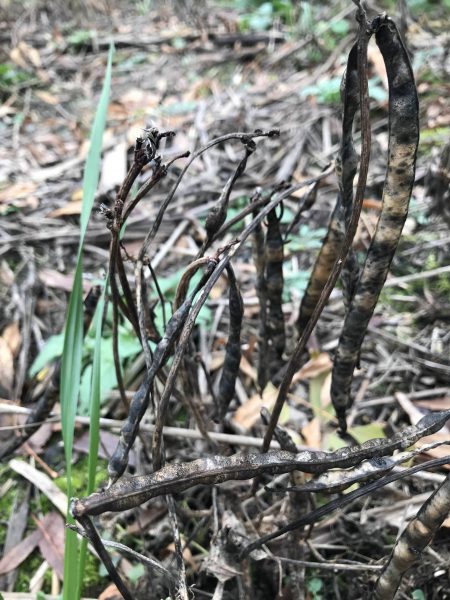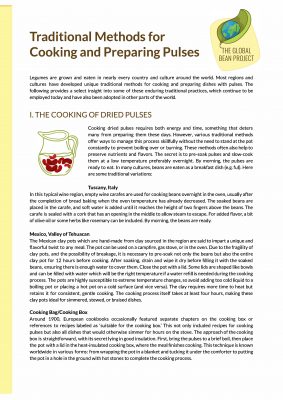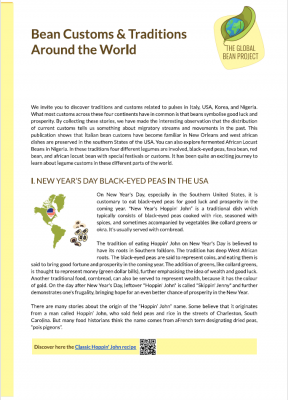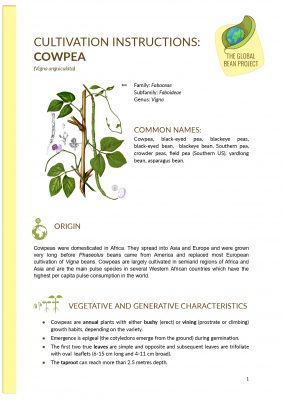(Vigna unguiculata)
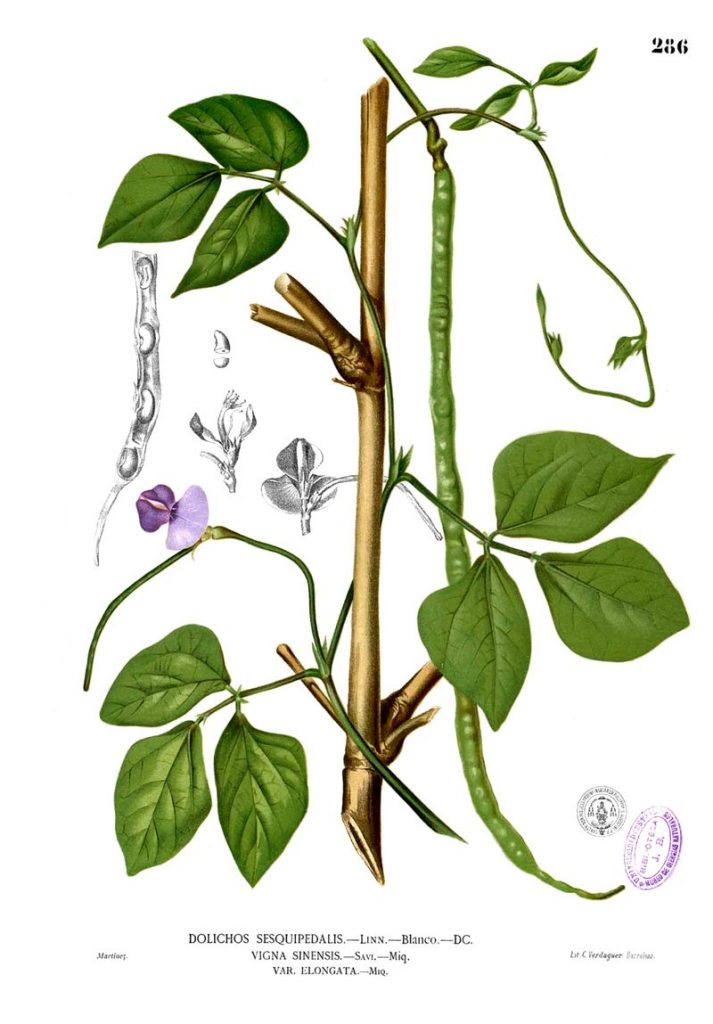
Family: Fabaceae
Subfamily: Faboideae
Genus: Vigna
COMMON NAMES:
Cowpea, black-eyed pea, blackeye peas, black-eyed bean, blackeye bean, Southern pea, crowder peas, field pea (Southern US), yardlong bean, asparagus bean.
ORIGIN
Cowpeas were domesticated in Africa. They spread into Asia and Europe and were grown a very long before Phaseolus beans came from America and replaced most European cultivation of Vigna beans. Cowpeas are largely cultivated in semiarid regions of Africa and Asia and are the main pulse species in several Western African countries, which have the highest per capita pulse consumption in the world.
VEGETATIVE AND GENERATIVE CHARACTERISTICS
- Cowpeas are annual plants with either bushy (erect) or vining (prostrate or climbing) growth habits, depending on the variety.
- Emergence is epigeal (the cotyledons emerge from the ground) during germination.
- The first two true leaves are simple and opposite and subsequent leaves are trifoliate with oval leaflets (6-15 cm long and 4-11 cm broad).
- The taproot can reach more than 2.5 metres depth.
- The large flowers are born on inflorescences at the ends of peduncles that arise from leaf axils and can be white, yellowish, pale blue or violet. Cowpeas are self-pollinating, meaning that the flowers have both male and female reproductive structures and fertilise themselves. However, around 1% of cross-pollination can also occur.
- Pods occur in pairs forming a V, mostly pending and vertical, but they can be erect. They are cylindrical, 8-30 cm long and 5-12 mm broad and contain 8-20 seeds.
- Some varieties were selected for very long pods (50-90 cm), for their consumption as a vegetable called yardlong bean (V. unguiculata ssp. unguiculata cv. sesquipedalis).
- Seeds are kidney-shaped, oval or rhomboid and can be white, pink/red, brown or black.
SOIL AND CLIMATE
- They are not a frost-hardy plant and thrive in hot conditions. If grown in climates with colder and shorter summers than the mediterranean climate, the possibility to harvest dry seeds will not be guaranteed every year.
- Cowpeas do not tolerate excessively wet conditions or waterlogging and should be grown on well-drained soil.
- Cowpeas show relatively high adaptation to drought and heat, especially in comparison to other commonly-grown legumes.
CULTIVATION PRACTICES
- Cowpeas have similar requirements to Phaseolus beans in terms of sowing date, soil, climate and cultivation technique. They should not be sown before the normal sowing date of Phaseolus beans in your area. Sow in soils warmer than a threshold varying between 10 and 18°C (depending on soil type and variety) to minimise the risk of cold-wet spells during germination and emergence and avoid the seeds rotting in the soil. You can also start your plants inside when there may still be late frosts and transplant them when 2 to 4 leaves are fully developed. This may allow you to gain one week or more on flowering date, which is useful if the summer is much shorter than in Southern Europe.
- For a continuous harvest of green shelly beans, sow additional plantings every two weeks. For fall harvest of fresh cowpeas and pods, sow no later than 8 weeks before the first frost date. See sowing and harvesting periods in the timeline below.
- The soil should be loosened a little. Apart from that, cowpeas have no great demands. A very interesting characteristic of cowpea is its general low input requirements.
- A large part of cowpea grown in Africa is intercropped with sorghum or pearl millet, and sometimes with maize, cassava or cotton.
- Soaking seeds overnight can accelerate germination. Sowing is best done in rows, 20-40 cm between plants and 40 to 60 cm between rows. Optimal sowing depth ranges between 2.5 and 5 cm. Sowing 2 to 5 seeds in each planting hole allows later thinning in order to choose the best plant(s) in each hole.
- Some varieties like the ‘Top Pick Pinkeye’ have a determinate growth habit, they only grow in a compact bush and almost all pods ripen simultaneously. These compact varieties can be planted in long, double rows that will help support each other as the plants mature side by side.
- Other varieties like the ‘Red Ripper Pea’ grow in a more indeterminate growth habit and respond to water availability by altering their architecture: if water availability is relatively high, they develop long trailing vines. They produce at least one long vine per plant, so in that case it can be good to plan a tutoring system. The tutor does not need to be very strong because almost all the pods are produced in the lower part of the plants. You can also let these varieties trail outward naturally. In this case, you need to plan more space between plants.
- Crop rotation: it is recommended to plant nitrogen-consuming crops before and after cowpeas.
PESTS AND DISEASES
- Aphids (Aphis craccivora) can transmit viral diseases and cause severe damage: make sure the environment is favourable to their natural enemies, use nettle manure or potassic soap in case of high infestation.
- The cowpea pod borer (Maruca vitrata) feeds on flower buds, flowers and young pods.
- The corn earworm (Helicoverpa zea and Helicoverpa armigera) larvae damage leaves, buds, flowers, pods and seeds.
- Weevil (Callosobruchus maculatus and Acanthoscelides obtectus) ) adults lay eggs on the pods. The larvae develop inside the seeds and go out during storage. Right after harvest, mature seeds for consumption or for sowing in the following year should be dried very well and frozen for 10 days in airtight containers.
- Anthracnose (Colletotrichum lindemuthianum) is a seedborne disease causing tan to brown sunken lesions on leaves; lesions merging to girdle stems and petioles. Infection is favoured by moderate temperatures between 13 and 26°C. In case of infestation risk, plant only certified disease-free seed; practise good field sanitation such as removing crop debris from field after harvest to reduce levels of inoculum.
- The cowpea mosaic virus (CPMV) is considered a major pathogen of cowpea on which it causes symptoms ranging from mild to severe mosaic, chlorosis and necrosis. The affected leaves become reduced in size, pods can also be reduced and become twisted. CPMV is transmitted by cowpea seeds and by several beetle and aphid species.
- Other diseases that can harm cowpeas are Cercospora leaf spots, Asochyta blight, Powdery mildew, Fusarium wilt, rust, Septoria leaf spot.
HARVEST AND USES:
Cowpeas can be eaten in the form of leaves, young pods, fresh semi-ripe seeds or ripe dry seeds.
- The young leaves can be eaten, prepared much like spinach. Leaves can be harvested from 4 weeks after planting to the onset of flowering.
- Immature pods: The harvest time is about 2-4 months after sowing. Cowpeas mature quickly, so check often once you see the flowers in bloom, so you can harvest the pods at the optimal time. Depending on the variety, they will become fibrous sooner or later in their development.
- Immature seeds: to harvest semi-ripe seeds, wait until the seeds are at their maximum size: pick the pods when they are plump, still fresh but seeds are swollen inside. Immature pods and seeds can be blanched and frozen for later use.
- Mature, dry cowpeas are harvested when the pods have dried out. In indeterminate varieties, you may see dry pods and flowers on the same plant! In climates where the plants remain green or partially green when you need to harvest, cut whole plants and pile on tarps and put in front of fans under cover, and/or bring tarps outdoors on sunny days. Turn piles of plants regularly to facilitate drying and prevent moulding. As a pulse, cowpeas are suitable for countless delicious dishes (e.g. stews, patties, spreads ). The seeds are viable for 3 to 5 years.
TIMELINE
Optimal sowing and harvesting times vary greatly depending on climate and variety.
Consult local practices!
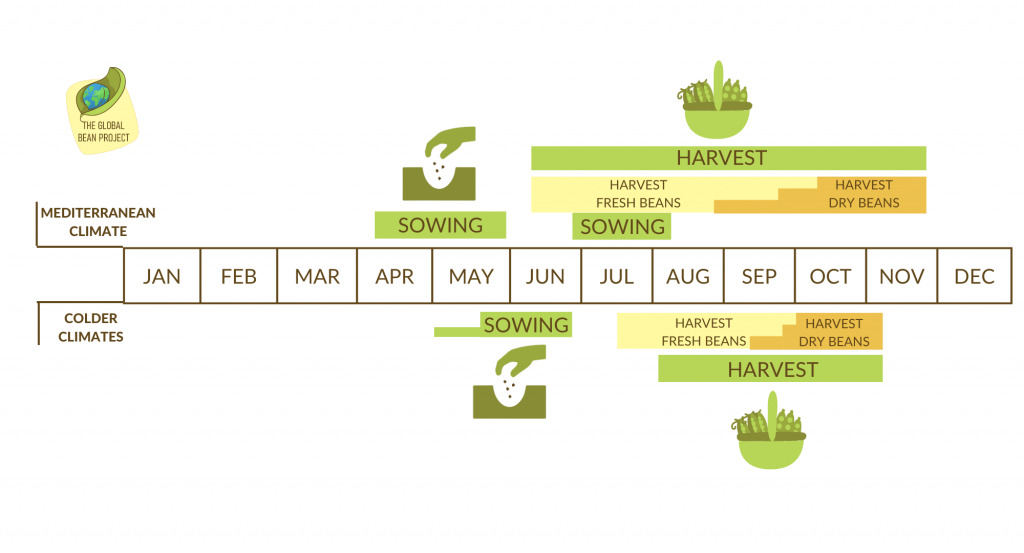
Recipes
Find recipes with cow peas on our recipe page!


